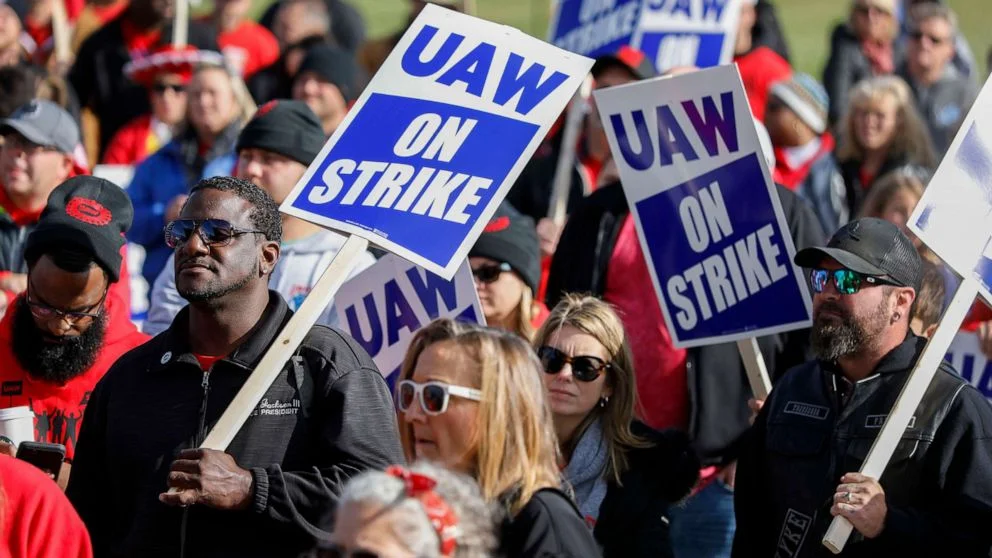The United Auto Workers (UAW) strike against major US automakers, including General Motors (GM), Ford, and Stellantis, has entered its second day, with negotiations at a critical juncture. Approximately 12,700 UAW members are actively participating in this coordinated labor action, which specifically targets assembly plants affiliated with the Detroit Three automakers. These talks resumed following the UAW’s initiation of one of the most significant industrial labor strikes in the US in decades.
Despite ongoing discussions, there has been no discernible sign of a breakthrough in negotiations. Notably, the UAW’s evaluation of the discussions with Ford carries a slightly more optimistic tone compared to their initial characterization of progress before the strike began.
Jim Farley, CEO of Ford, had previously voiced concerns that the UAW’s proposals might push the company toward bankruptcy. However, Mark Truby, Ford’s chief communications officer, has reaffirmed the company’s unwavering commitment to achieving a mutually beneficial agreement that takes into account the welfare of both workers and the company’s future investments.
Stellantis, the parent company of Chrysler, has recently presented an offer that includes salary increases of 20% over a four-and-a-half-year contract term, with an immediate 10% raise, aligning with proposals from GM and Ford.
Discussions with Stellantis are set to resume on Monday. Nevertheless, these offers still fall significantly short of the UAW’s demand for a 40% wage increase by 2027, which encompasses an immediate 20% raise.
The UAW strike has already caused disruptions in production at critical plants, impacting the availability of popular models such as the Ford Bronco, Jeep Wrangler, Chevrolet Colorado, and others.
Automakers argue the necessity of cost-competitive contracts due to the substantial industry shift toward electric vehicles. In contrast, workers emphasize the industry’s robust profits over the past decade and the notable increase in CEO salaries.
As negotiations continue to unfold, the outcome of this labor strike will significantly impact the future of labor relations within the automotive industry, the financial well-being of workers, and the trajectory of automakers as they navigate the transition to electric vehicles. The eyes of the industry and the public remain fixed on these critical negotiations.




